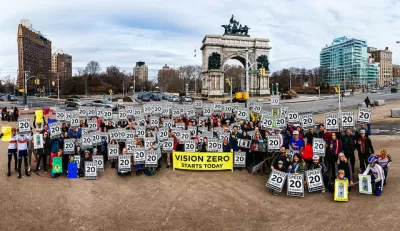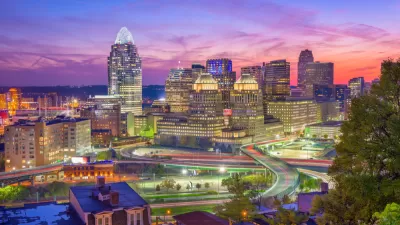PBS New Hour takes a deep dive into the climbing number of pedestrian deaths in the United States—now at their highest level in almost three decades.

Arren Kimbel-Sannit and a team of student reporters from the Howard Center for Investigative Journalism at Arizona State University report on the growing number of pedestrian fatalities around the nation, with the assumption that a variety of factors is contributing to the growing number of tragedies on the nation's roads: "wider roads, sprawling cities, heavier traffic in residential areas due to navigation apps and increasing distractions from digital devices."
The scene is set by an intersection in Los Angeles, where a driver struck and killed 17-year-old Christian Vega in February. Neighborhood advocates have called for safety improvements for years, according to Kimbel-Sannit, but the city acted too late to prevent Vega's death.
Though the problem is far from isolated to Los Angeles. "Across the country, pedestrian deaths are on the rise, jumping from more than 4,000 in 2009 to nearly 6,000 in 2017," according to Kimbel-Sannit.
The report is available in the television broadcast and in a full transcript published below the video at the link below.
FULL STORY: Why U.S. pedestrian deaths are at their highest level in almost 30 years

Maui's Vacation Rental Debate Turns Ugly
Verbal attacks, misinformation campaigns and fistfights plague a high-stakes debate to convert thousands of vacation rentals into long-term housing.

Planetizen Federal Action Tracker
A weekly monitor of how Trump’s orders and actions are impacting planners and planning in America.

San Francisco Suspends Traffic Calming Amidst Record Deaths
Citing “a challenging fiscal landscape,” the city will cease the program on the heels of 42 traffic deaths, including 24 pedestrians.

Defunct Pittsburgh Power Plant to Become Residential Tower
A decommissioned steam heat plant will be redeveloped into almost 100 affordable housing units.

Trump Prompts Restructuring of Transportation Research Board in “Unprecedented Overreach”
The TRB has eliminated more than half of its committees including those focused on climate, equity, and cities.

Amtrak Rolls Out New Orleans to Alabama “Mardi Gras” Train
The new service will operate morning and evening departures between Mobile and New Orleans.
Urban Design for Planners 1: Software Tools
This six-course series explores essential urban design concepts using open source software and equips planners with the tools they need to participate fully in the urban design process.
Planning for Universal Design
Learn the tools for implementing Universal Design in planning regulations.
Heyer Gruel & Associates PA
JM Goldson LLC
Custer County Colorado
City of Camden Redevelopment Agency
City of Astoria
Transportation Research & Education Center (TREC) at Portland State University
Jefferson Parish Government
Camden Redevelopment Agency
City of Claremont





























